Hangno Hartono Advocates Waste Repurposing Through Wayang Art

Hangno Hartono at the Rumah Indonesian Visual Art Archive (IVAA) | Photo: Abul Muamar.
Indonesia is rich in culture. A Special Region in particular, Yogyakarta (also often called Jogja), is known for its art, education, and cultural scenes. Unfortunately, this province has a mounting problem of waste management. Piyungan landfill in Yogyakarta has become literal mountains of waste, unable to take more. This issue caught the eye of Hangno Hartono, a wayang artist and cultural expert.
He heard how locals around Piyungan landfill would sometimes block the road to the dump, causing heaps of waste to accumulate around Yogyakarta. As an artist and Yogyakarta locale, Hangno wanted to contribute to the solution. So, Hangno and his friends started Wayang Merdeka. The name combines the word wayang, an Indonesian traditional puppet art, and merdeka, an Indonesian word for freedom or independence. It is a community with a mission of public education using wayang as the primary medium.
Hangno Hartono and Wayang
Hangno was born in Magelang on August 19, 1963. Growing up in Muntilan, Hangno’s interest in wayang began in childhood. He has been shaped and guided by his environment to pursue art. Besides wayang, he was also inspired by other art forms, such as the ancient temples of Borobudur and Mendut.
“In Muntilan, there is a temple where Chinese Indonesians pray. Uniquely, the temple often hosted wayang shows. I liked watching them. The wayang artists were also Chinese Indonesians. That was what made me curious to learn more about wayang. Then, I finally had the chance to do so when I started living in Jogja,” said Hangno.
Hangno then spent his higher education studying Philosophy at UIN Syarif Hidayatullah and Leatherworking at ISI-AKNSB Yogyakarta. He also opened a craft business. In essence, Hangno lives almost his entire life among art.
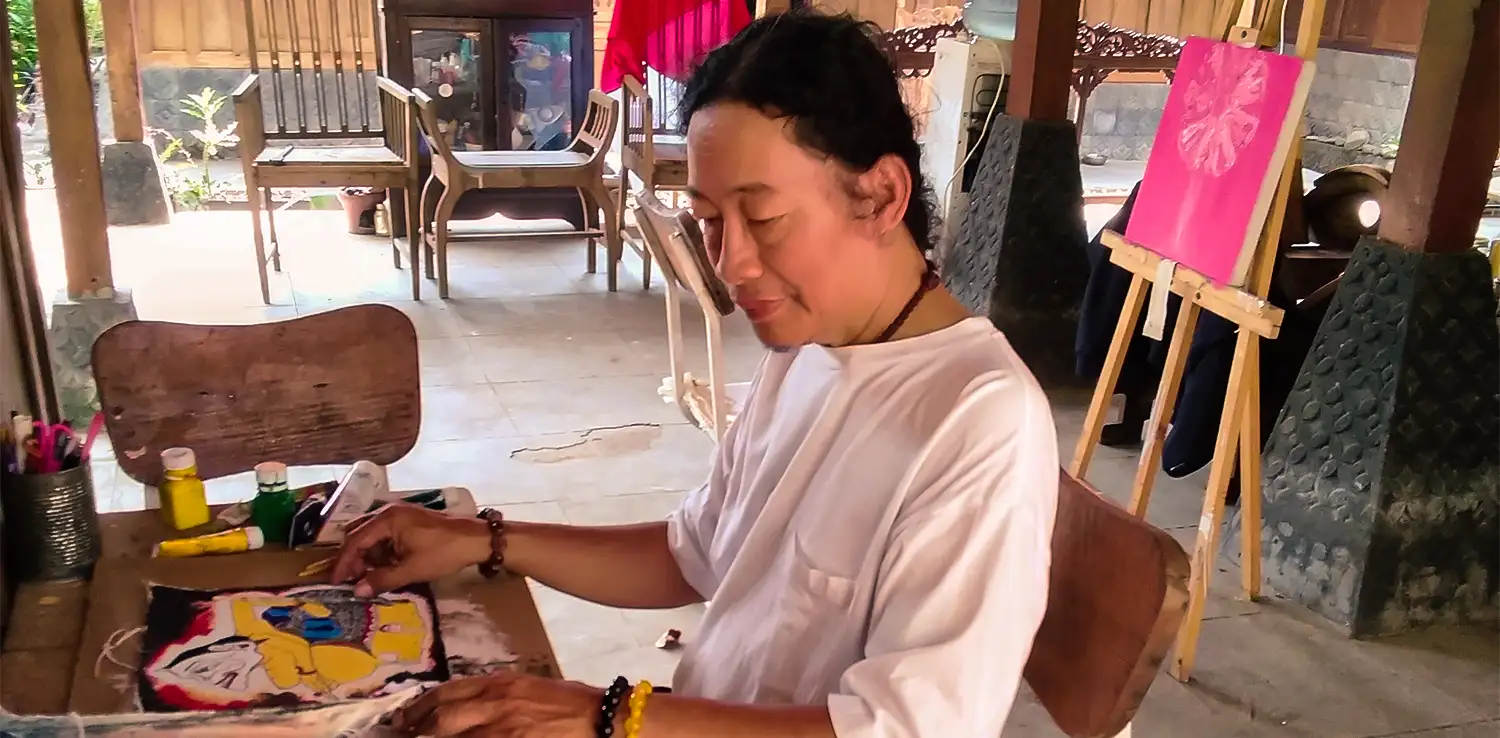
The moment that convinced Hangno to pursue the art of wayang came when he studied tatah sungging, the carving and painting of leather wayang, for the first time under Maestro Ki Sagio several years ago.
“When I was first given the carving tool, I opened it and smelled how fragrant it was. It smelled like jasmine. At the time, I felt it was an important sign for my journey in life,” Hangno shared. “Since then, I began seriously pursuing the world of wayang. It was a mythical moment that was impossible to understand rationally. But for me, it was an incredibly significant moment.”
Forming Wayang Merdeka Community
Wayang is among Indonesia’s many traditional art forms. However, time and development slowly erode the existence of wayang in many places. Some people even avoid it because of misperceptions and misinformation from social media. In reality, wayang can be – and has historically been – a teaching medium imbued with messages of morality to build the nation’s characters.
“Wayang is ripe with meaning: the story narrations, the iconography, the physicality—all with its philosophy. When we enter the world of wayang, we enter its depth. It’s a shame that those depths are often forgotten by many,” said Hangno.
He is active in various events and communities that introduce wayang to the general public. Conserving wayang art, for Hangno, also means nurturing humanity and the environment in which humans and other beings live.
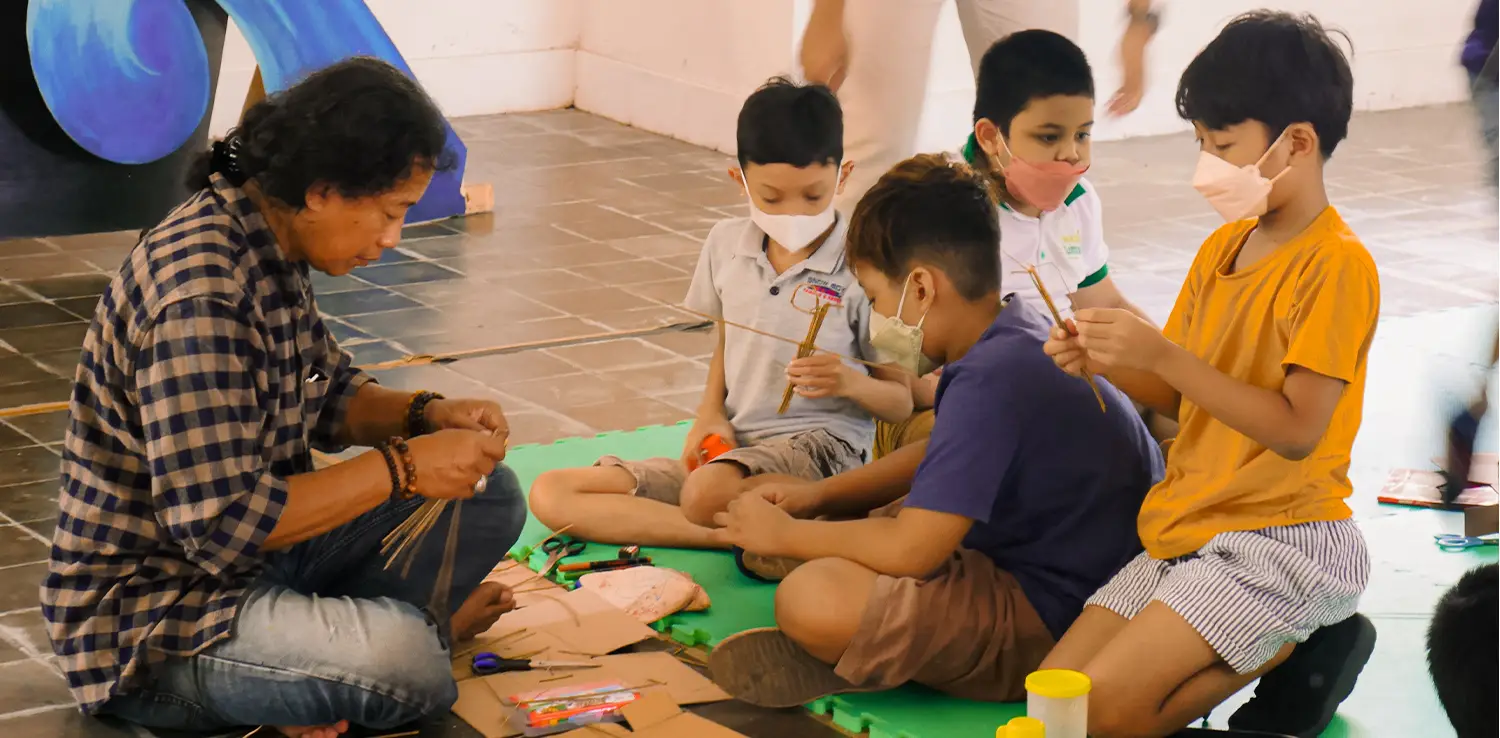
With his friends in Wayang Merdeka, Hangno invites children to help keep their environment clean by repurposing household waste. He teaches them how to turn waste into something of value by making wayang puppets from it.
Since 2022, Wayang Merdeka routinely holds workshops on making wayang from plastic waste and organic materials. It partners with other communities, such as the Urban Farming Kali Code Community, Tumbuh Elementary School, and Kinder Station Primary. Putting aside the rigid and traditional forms and stories of wayang like Ramayana and Mahabharata, Hangno gives the kids the freedom to create wayang as they like.
About the workshop, the father of two explained, “All workshop participants bring their own trash and garbage from home. Then, we teach them how to make wayang at the workshop, from lamination to painting to forming the wayang characters. Our concept is freedom. The kids are free to make any kind of wayang. Our goal is just to plant the word ‘wayang’ in their cognitive awareness, making the art close with and accepted by society.”
The activism of Wayang Merdeka doesn’t stop there. In the future, they plan to protect wayang-related cultural heritage sites.
“Many cultural heritage sites are at risk of destruction. One of them is the Watu Wayang Site in Piyungan. The site is starting to be destroyed for road development. Now, only a little of it is left. It’s a shame. That’s why, to educate people about the importance of the site, we will hold a wayang workshop there. This will be our routine agenda soon. We will move from site to site, especially those in relation to wayang,” said Hangno.
Inspired by Wayang
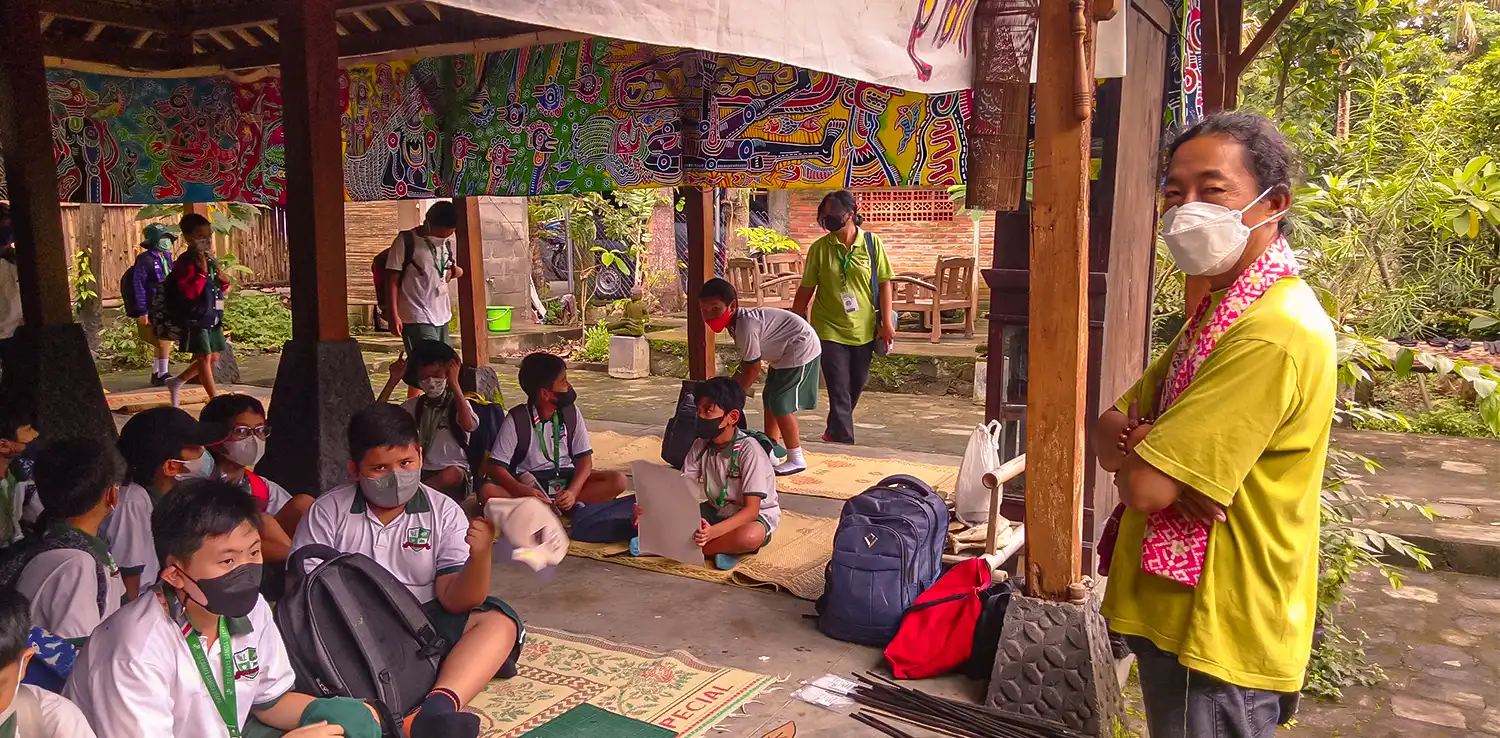
In 2019, Hangno established Omah Budaya Kahangnan, a wayang art gallery in Pringgading Village, Yogyakarta. This gallery regularly holds wayang art exhibitions that involve local communities, including students and the public. It also houses a small library specializing in Javanese literature.
Hangno Hartono also formed Wayang Kontemporer, a contemporary wayang community. Once, they held a contemporary wayang show at Omah Budaya Kahangnan. Five wayang artists performed one after another in the show that lasted all night.
Hangno has had his art in many exhibitions. Among them are the exhibitions with Wayang Alien from plastic waste, with Komunitas Malioboro, and a solo exhibition titled ‘Trilogi Mencari Arjuna’ that spotlighted the significance of leadership. He hopes his exhibitions can inspire many people. Hangno is also active in various communities, such as the UFO Network Indonesia and Cahaya Nusantara (YANTRA), where he is the director.
“All elements of life are a part of culture. Not only art; economy, politics, and others are also culture. It’s just a matter of how we approach them to support humanity and the environment,” Hangno said.
Bringing Art Closer to People
Hangno doesn’t deny that art often cannot be understood by everyone. Hence, “There needs to be an appropriate communication method to properly convey to people what artists have created. This is seldom done. Most art people only mingle in the art scene, never venturing outside. Even the few who do only explore when there are exhibitions or discussions,” he said.
Bringing art closer to people isn’t without reason. Hangno believes that art can inspire people and the government in the collective effort to grow, develop, and nurture Indonesian culture.
Hangno affirmed, “When a culture is stagnant, the nation will not develop. That’s why we need creative people. So, artists are responsible for inspiring people to create new things. These people can be anyone: politician, business person, teacher, or anything. They, too, are cultural actors.”
Translator: Nazalea Kusuma
Read the Indonesian version of this article at Green Network Asia – Indonesia.
Thank you for reading!
Green Network Asia – International Annual Individual Membership supports your personal and professional growth with unlimited online access to our “Exclusive Content” platform purposefully designed to showcase cross-sectoral insights on sustainable development and sustainability in the Asia Pacific and beyond. Enjoy the Membership benefits, including -but not limited to- public policy & regulatory updates, easy summaries of research findings & reports, and impact stories from governments, businesses, and civil society.
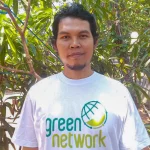
Abul Muamar
Amar is the Manager for Editorial-Indonesia at Green Network Asia. He graduated from Universitas Gadjah Mada with a master's degree in Philosophy and Universitas Sumatera Utara with a bachelor's degree in Communication Science. He has ten years of professional experience in journalism.


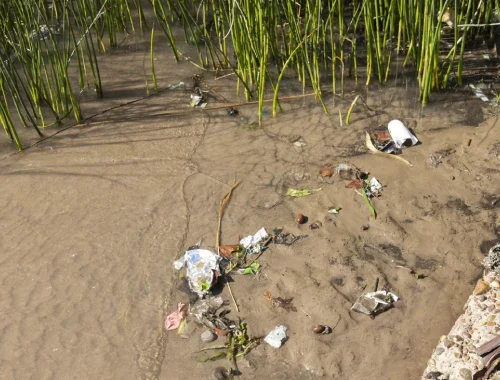 Upholding the Machángara River’s Rights of Nature Against Pollution
Upholding the Machángara River’s Rights of Nature Against Pollution  Accelerating Gender-Responsive Disaster Management with Sendai Gender Action Plan
Accelerating Gender-Responsive Disaster Management with Sendai Gender Action Plan  ASEAN and the EU Support Sustainable Connectivity with a Higher Education Program
ASEAN and the EU Support Sustainable Connectivity with a Higher Education Program 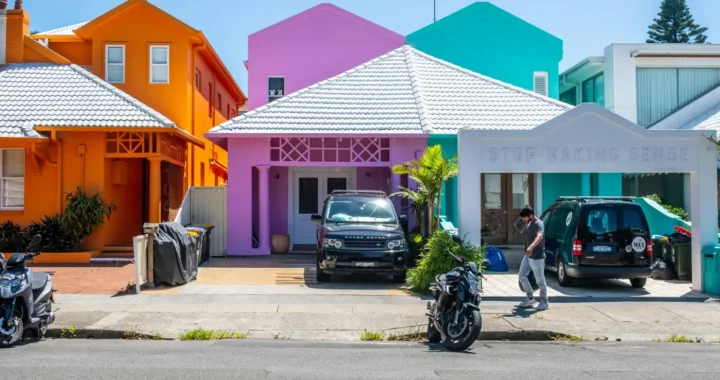 Australia Proposes Right to Housing Bill to Tackle Housing Crisis
Australia Proposes Right to Housing Bill to Tackle Housing Crisis 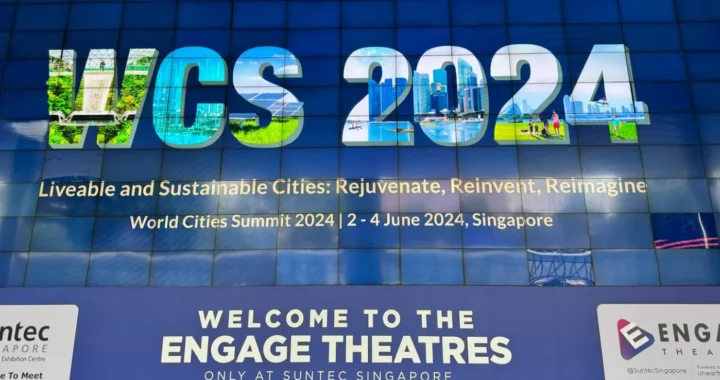 World Cities Summit 2024: A Trigger to Help Build a Sustainable Singapore
World Cities Summit 2024: A Trigger to Help Build a Sustainable Singapore 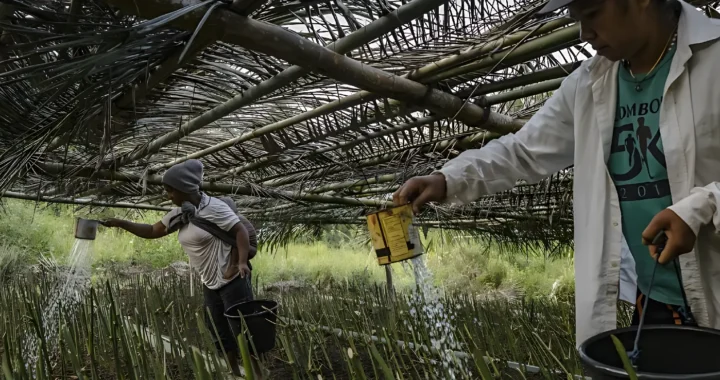 Mama Bambu: How Women in Flores, Indonesia Take Part in Environmental Conservation
Mama Bambu: How Women in Flores, Indonesia Take Part in Environmental Conservation